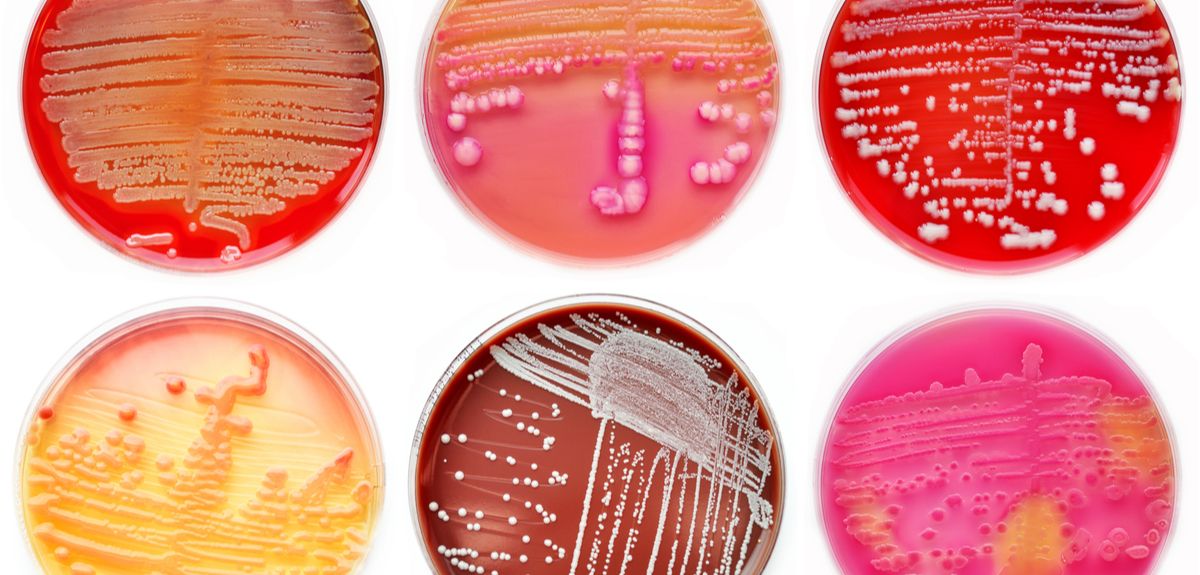
Image credit: Shutterstock
How can evolutionary biology help to get rid of antibiotic resistant bacteria?
Craig MacLean, Professor of Evolution and Microbiology at Oxford's Department of Zoology, explains how evolutionary biology can help us to get rid of antibiotic resistant bacteria.
Bacteria are tiny single cell organisms, invisible to the naked eye, that live in essentially every possible habitat on our planet. Plants and animals are covered with microorganisms, the soil and the oceans are teeming with bacteria, and it is estimated that bacterial cells actually outnumber human cells in the body by a factor of 10-100:1. The overwhelming majority of bacteria are completely harmless, but a small minority of pathogenic bacteria can cause infections in humans. For most of human history, bacterial pathogens have been a major cause of disease and mortality. For example, the plagues that ravaged Europe in the middle ages were caused by the bacterium Yersinia pestis, and tuberculosis, and cholera outbreaks are caused by the bacterium Vibrio cholera.
The development of antibiotics in the 1940s provided a simple and effective treatment for many bacterial infections; for example, antibiotics decreased the mortality rate associated with serious cases of pneumonia from 90% to 10%. Given these stunning results, many prominent members of the medical community, including the US Surgeon General, thought that antibiotics would effectively make bacterial disease a thing of the past. Against this background of boundless optimism, researchers had already discovered that bacteria could become resistant to antibiotics and Alexander Fleming, who led the team that discovered penicillin, warned that the misuse of antibiotics would lead to the rise of resistance, rendering antibiotics ineffective.
Antibiotics have now saved millions of lives, but the large-scale use of antibiotics has driven the spread of resistance, as predicted by Fleming. Pathogenic bacteria have evolved resistance to all of the main classes of antibiotics and pan resistant bacteria have caused untreatable infections. Resistance already imposes a substantial health and economic burden, and an influential report published by the O’Neill commission in 2016 predicted that resistant infections could cause 10 million deaths per year and impose a global financial cost of 100 Trillion USD by 2050. Given this threat, resistance has been identified as one of the most important global challenges by organisations such as the United Nations, the G8 and even the International Monetary Fund.
The spread of antibiotic resistance in pathogenic bacteria is a simple and elegant example of evolutionary adaptation by natural selection. Bacteria can become resistant to antibiotics through mutations that alter the cellular targets of antibiotics or by acquiring dedicated resistance genes from other bacteria. The acquisition of resistance is a very rare event; for example, resistance mutations usually occur in less than 1 in a million bacteria. However, resistant bacteria can continue to grow and reproduce under antibiotic treatments that effectively paralyse or kill their antibiotic susceptible neighbours – this is Darwinian natural selection in its simplest and cruellest form. Rare resistant strains can rapidly come to dominate pathogen populations under antibiotic treatment, and, in a worst-case scenario, these resistant bacteria can then go on to infect other people.
This simple sketch shows how evolution drives the spread of resistance, but it leaves out many important details. Evolutionary biologists and microbiologists have become increasingly interested in understanding the processes driving the spread and maintenance of resistance. These studies have addressed a wide-range of important questions, such as: What limits the transmission of resistant bacteria between people? How does the strength of antibiotic treatment influence the likelihood of resistance emerging? Can antibiotic cocktails be used to suppress the evolutionary advantage of resistance? How do resistance genes move between bacteria? We now have quite a mature theoretical framework for thinking about these important questions. The problem, however, is that the largely theoretical approach the evolutionary biologists have taken to resistance is not very well connected to the reality of resistance in the clinic.
In the last 15 years, technological innovations have massively improved our ability to sequence the genetic code of all living organisms, especially bacteria. Sequencing the genomes of pathogenic bacteria isolated from infections has provided a much clearer picture of how resistance emerges and spreads, especially in hospitals. In many important human pathogens, the global increase in the prevalence of antibiotic resistance has been driven by the epidemic spread of a relatively small number of highly resistant ‘superbugs’ that transmit between people, such as MRSA Staphylococcus aureus and XDR Mycobacterium tuberculosis. If evolutionary biology is going to help contribute to stopping the spread of antibiotic resistance, the field is going to need to shift emphasis towards understanding the specific processes that have driven the emergence of the superbugs.
For more information, read: 'The evolution of antibiotic resistance' in Science.